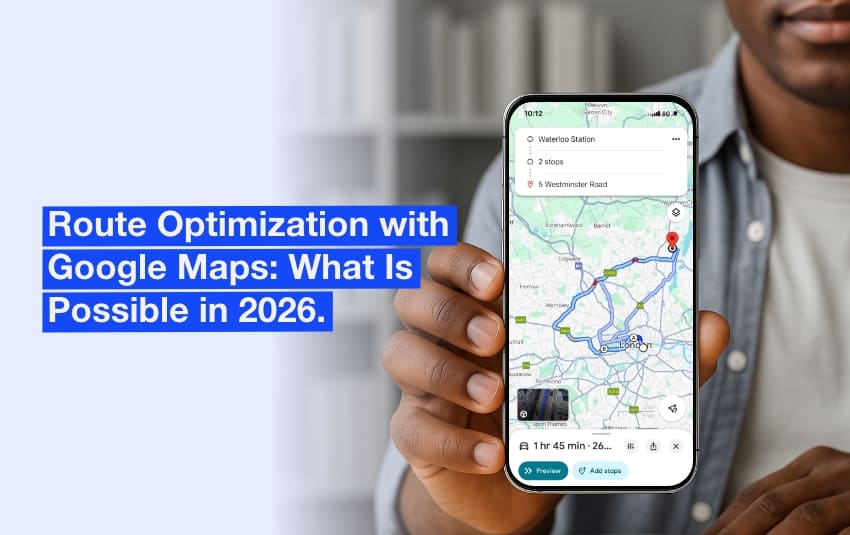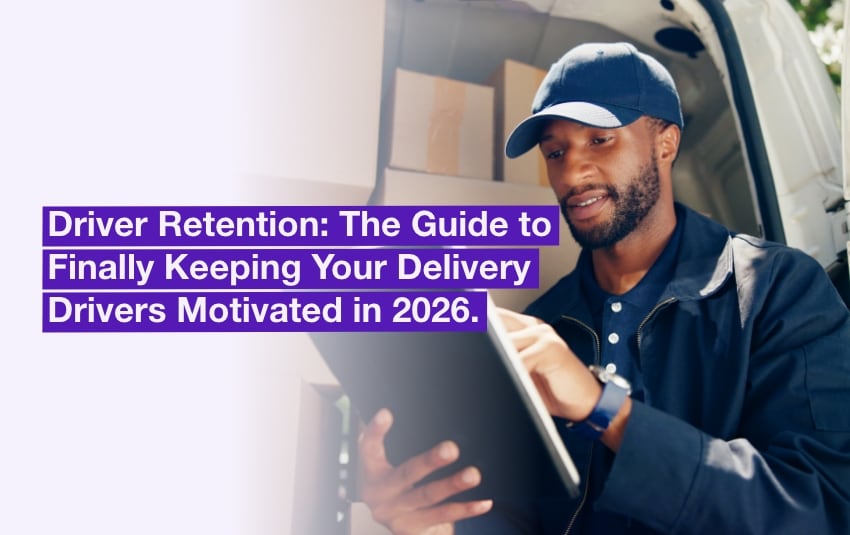How to optimise the delivery of large parcels?
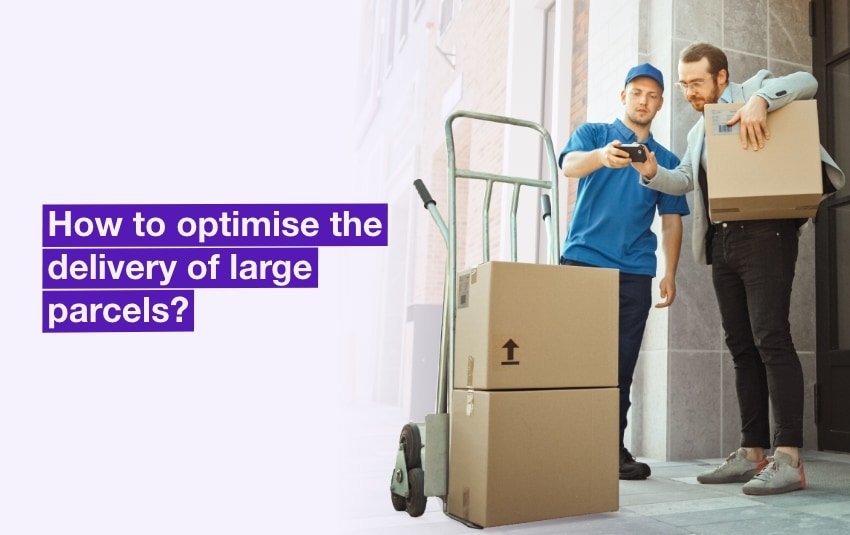
The delivery of heavy goods such as furniture or household appliances is probably the most difficult operation for logistics professionals: XXL goods, risky handling, restricted or forbidden parking in town centres, deliveries to upper floors, sometimes without a lift, etc.
However, very few clients are willing to pay the right price for such a complicated service, and this market is getting more and more uberised.
In such a competitive environment, these 5 tips will help you to improve the management of heavy or bulky parcels, both in B to B and B to C.
Table of contents
- Outsource the transport or delivery of certain goods
- Optimise delivery routes with tailored software
- Negotiate a large enough delivery time window
- Maximise the filling rate of trucks
- Reduce delivery management costs by automating customer exchanges
The optimisation of large parcel deliveries helps to meet customer expectations. Software solutions enable logistics professionals to improve the management of heavy or bulky parcels. In a competitive environment, this is the guarantee of greater profitability.
Outsource the transport or delivery of certain goods
If you don’t do it often enough, you run the risk of doing it badly… and in particular of compromising your profitability! Based on this fact, a furniture manufacturer that operates mainly in the local area would have an interest in outsourcing national or international deliveries, which are hardly profitable for him. Other companies, such as our client Home & Moi, have chosen to outsource deliveries above a certain volume of activity, in order to optimise the use of their fleet.
To outsource the delivery of a large parcel, several solutions are available, depending on the time required and the level of service expected:
- Use a freight exchange to delegate some loads to general carriers occasionally.
- Sign agreements with service providers that specialise in the handling of fragile products, both nationally and internationally.
- Entrust the last mile delivery in the city to a specialist in urban logistics. You can, for example, send your large parcels to one of the many logistics hubs that are developing on the outskirts of large cities.
Optimise delivery routes with tailored software
Once you have delegated operations that are hardly profitable for you, the next step is to streamline as much as possible the deliveries that you continue to make yourself. However, the constraints that transport professionals have to manage today are such that only specialised software is still able to calculate the best routes, taking into account both:
- The opening hours or delivery slots required by the customers.
- The skills and licences of each driver.
- Labour requirements such as break times, holidays, number of people needed to move a heavy furniture, American fridge, etc.
- Traffic conditions such as traffic jams, roadworks, low emission zones, roads forbidden to certain categories of vehicles, etc.
While most managers spend 30 minutes to 2 hours each day planning routes with a spreadsheet and Google Maps, software like AntsRoute calculates the best possible scenarios in just a few minutes… and with much more effective results!
The use of route management software also facilitates the work of the delivery drivers. The drivers of SRS Services, a transport and removal company near the city of Reims (France), for example, are very happy to have an all-in-one tool. In addition to route planning, AntsRoute includes GPS functions, proof of delivery management, multiple solutions for easy communication with customers, etc.

The optimisation of parcel delivery routes on AntsRoute.
Negotiate a large enough delivery time window
To get the most out of route optimisation software, it is important to understand the basics of how it works. To put it very simply, this type of software processes a huge amount of data based on rules, i.e. the algorithms, to build the best possible routes. In other words, the more flexibility you give the software in choosing the day, the time, the driver or the vehicle, the greater the optimisation would be.
The idea is therefore to keep as much flexibility as possible in your contractual obligations or in the promises made to customers. For example, let’s suppose that William and John always deliver to Manchester on Tuesdays. It is better to tell your customers in Manchester that the delivery will take place on Tuesday, and that they will receive an e-mail or text message the day before confirming the time window. In this way, you give the software enough flexibility to determine the most profitable solution… which is not always the most obvious, far from it!
It could be surprising, but sometimes it is more cost-effective to assign two different teams to serve the same area at the same time, as this allows other routes to be organised much more efficiently during the week. And this is just one example of the many (good) surprises that await our customers!

Increase the gains linked to the optimisation of large parcel deliveries by giving the software more flexibility when it comes to determining delivery time slots.
Maximise the filling rate of trucks
Another key method for reducing the number of miles driven is to make use of every available cubic metre – but without the risk of overloading. But when it comes to optimising the transport of furniture or household appliances, even the smallest error in your calculations or in loading the truck can be very expensive.
AntsRoute therefore includes this module designed to manage vehicle capacities. To do this, you just need to set the carrying capacity of each vehicle once and for all in kilos, cubic metres, or even in number of units if you always carry furniture of similar size.
Then our software uses this data to use all the space available on board, but also to facilitate the loading of the truck thanks to 2 complementary tools:
- The list of deliveries to be made, the customer’s contact details, the list of packages to be delivered at each address, as well as any additional services (assembly, installation, return of packaging, old equipment, etc.).
- AntsRoute Scan, which is a complementary application available on request, helps the drivers to load the truck smartly and without wasting time. When loading, the worker only has to scan the barcode of a parcel to display on his smartphone the name of the customer to be delivered, the expected delivery time and the loading order. Obviously, the driver places parcel number 12/12 at the front of the truck, as it will be the last to be unloaded.
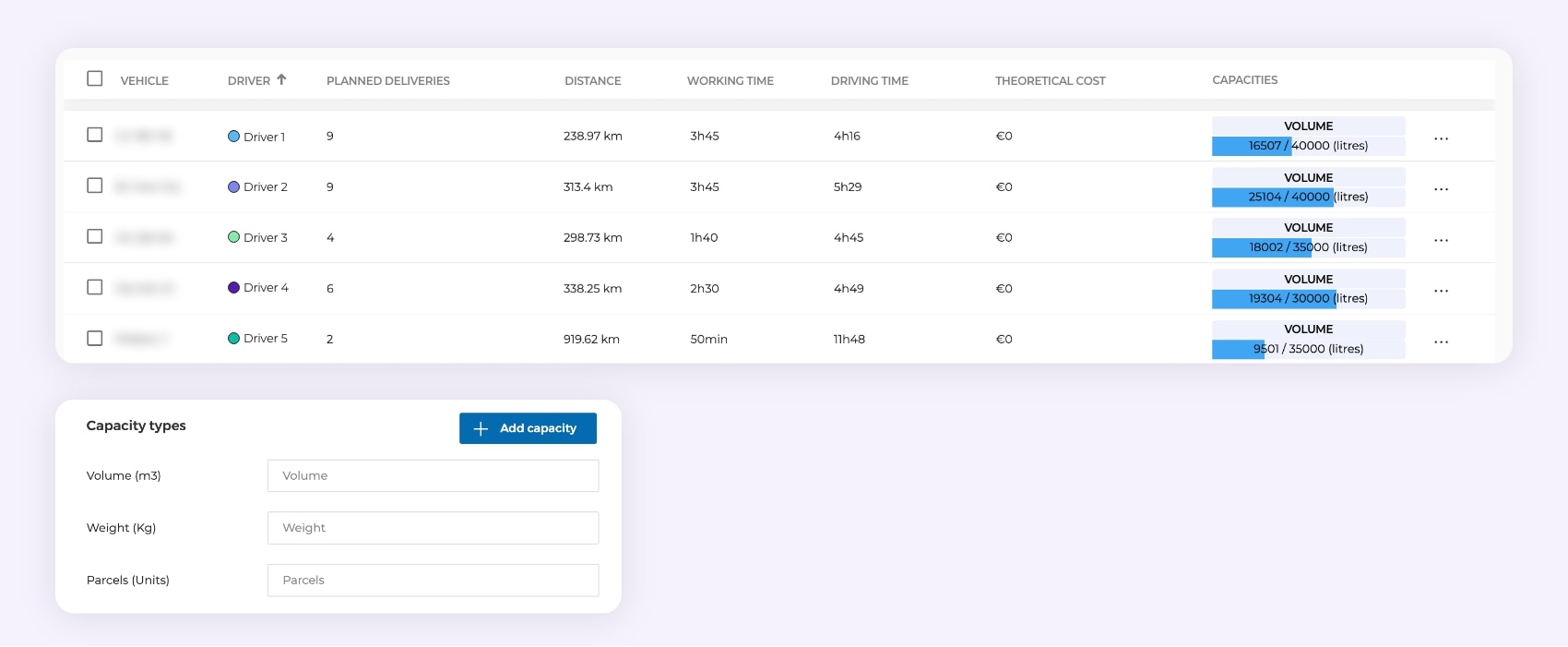
The management of vehicle loading capacities on AntsRoute.
Reduce delivery management costs by automating customer exchanges
If you ship large heavy goods such as furniture, mattresses or kitchens, every effort should be made to avoid delivery failures. Obviously, like any other parcel, the goods will have to be unloaded, stored and then reloaded. But in this industry, the cost of handling each failed delivery can quickly become prohibitive. The weight and volume of these products naturally increase handling costs (labour, forklifts, pallet trucks, cherry pickers, etc.). In addition, the distance travelled between two customers is often much greater than for standard-sized packages!
AntsRoute therefore includes many features to minimize delivery failures while optimizing customer communication at every stage:
- Multiple appointment booking systems to suit your constraints and work processes.
- Confirmation of the delivery time window by email or text message, the day before and when the driver is on the way.
- Possibility for the customer to cancel or postpone the delivery time online 24/7.
- Real-time geolocation of the driver via a tracking link, etc.
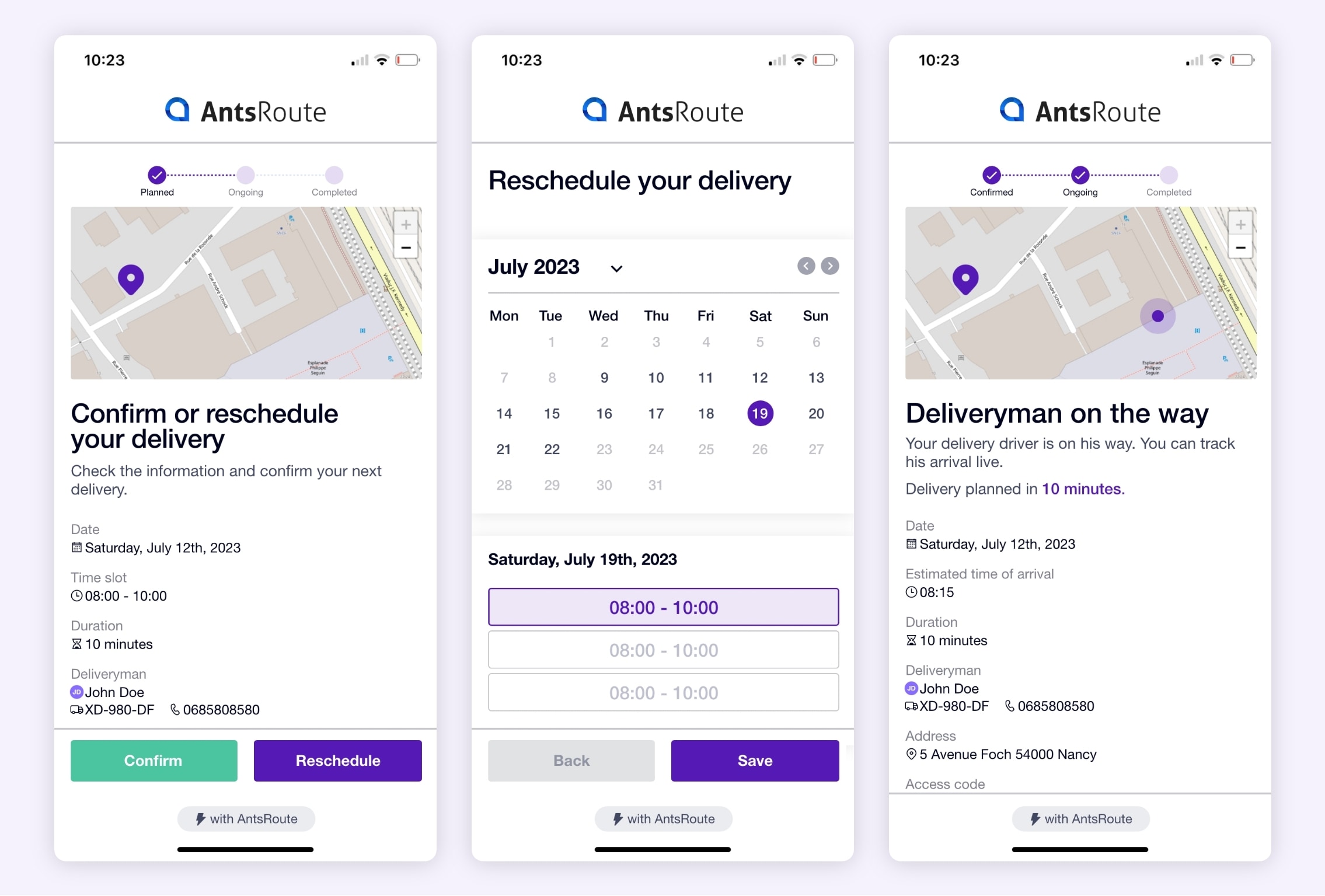
The rescheduling of a delivery and the geotracking of a delivery driver on AntsRoute.
At the other end of the chain, AntsRoute also allows you to optimise the exchange of information with your managers:
- Automated reception and processing of delivery orders, thanks to the integration of AntsRoute with specialised software.
- Immediate sending of complete service reports (photos, comments, electronic signature of the customer, etc.).
Ready to try the many options included in AntsRoute for free for 7 days? Go to this page!
Free 7-day trial | No credit card required




